Volume 05, No.6 Page 385 - 388
2. その他のビームライン/OTHER BEAMLINES
A Status Report : Taiwan APCST Contract Beamline BL12B2
Asia and Pacific Council for Science and Technology
- Abstract
- The Taiwan APCST contract beamline BL12B2 is a multiple-purpose beamline, which is designed to accommodate experiments of x-ray absorption spectroscopy, protein crystallography, x-ray scattering, and micro-beam diffraction. The beamline optics is designed to provide both white beam and monochromatic beam of energies from 5 to 70 keV. Besides high-resolution x-ray absorption and scattering, special experimental capabilities at this beamline will include quick-EXAFS, high-throughput MAD, and micro-beam high-pressure diffraction. The beamline installation was completed in September 2000. The radiation and safety test was passed in early October and the beamline has been under commissioning since then. In this report, we present in brief the beamline design, some construction highlights, and our initial commission results.
Introduction
Under an international collaboration between Asia and Pacific Council for Science and Technology (APCST) and Japan Synchrotron Radiation Research Institute (JASRI), APCST proposed to construct one bending magnet BL12B2 and one undulator contract BL12XU beamline at SPring-8 as a special 5-year x-ray project for Taiwan. The proposal was accepted by JASRI and a SPring-8 Contract Beamline Agreement was signed between JASRI and APCST on December 18, 1998 in Hsinchu, Taiwan (Fig.1). The bending magnet beamline BL12B2 was proposed to provide multiple capabilities for x-ray research in x-ray absorption spectroscopy, protein x-ray crystallography, high-resolution x-ray scattering and micro-diffraction, whereas the undulator beamline BL12XU was proposed primarily for inelastic x-ray scattering. The construction of BL12B2 was started in July 1999 and completed in September 2000. The safety and radiation test of the beamline was passed in October, and the commissioning of the beamline followed right afterwards.
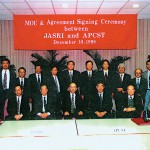
Fig.1 MOU & Agreement Signing Ceremony between JASRI and APCST on December 18, 1998
Beamline Design
The main design goals of beamline BL12B2 is to have extended x-ray capabilities to compliment to those of the existing wiggler beamlines at Taiwan Light Source and to use the advantages of high energy and high brightness of the SPring-8 source. In order to accommodate a wide range of experimental needs of x-ray users in Taiwan, the BL12B2 is designed to be easily operated in three different modes: (1) a white beam mode, (2) a monochromatic beam in medium energy range (5 keV < E < 25 keV) with a energy resolution ∆E/E ![]() 10-4, and (3) a monochromatic beam in high energy range (25 keV < E < 70 keV) with a energy resolution ∆E/E
10-4, and (3) a monochromatic beam in high energy range (25 keV < E < 70 keV) with a energy resolution ∆E/E ![]() 10-4.
10-4.
Figure 2 shows the general beamline layout of BL12B2. This beamline is based on the design of the SPring-8 standard bending magnet beamline with modifications made to meet some special application requirements. This beamline consists of three major optical components: a collimating mirror (CM), a double crystal monochromator (DCM), and a focusing mirror (FM). Several beamline features are included. First, the use of AC servo instead of stepping motors in DCM provides an option to scan precisely the standard adjustable-inclined double crystal monochromator at a speed of 1degree/sec in the pseudo-channel-cut mode for Quick-EXAFS measurements. Second, the dual-strip coated mirrors (Rh + Si) are used to effectively suppress high harmonic contamination in low energy region (5 keV < E < 12 keV). Third, the deflection/elevation stages are employed to allow quick relocation of the optical components in the switch of operational modes. A space is also reserved between CM and DCM for the installation of a double multi-layer monochromator in the future when flux-demanding experiments are called.
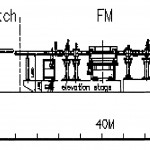
Fig.2 The generic SPring-8 bending magnet beamline design is adapted for BL12B2. Most of beamline transport components are SPring-8 standard to reduce the design efforts. The beamline can be operated in one the three operational modes described in text. Two experimental hutches are built to offer either white beam or monochromatic beam.
Along the beamline, each major optical component section is equipped with an X-Y slit set, a pumping station, a view port assembly (with a fluorescent screen), and a gate valve. An end Be window is located at the end of the front end with a He-spray chamber to minimize the oxidation of Be. Two experimental hutches are built for specific experiments. The upstream hutch is a white beam hutch which will house experiments such as high pressure x-ray diffraction and micro-diffraction, while the downstream hutch, a monochromatic beam hutch, will be used for other experiments such as XAF, powder diffraction, high resolution x-ray scattering, and protein crystallography. Inside the white beam hutch, a pair of pre-figured Kirkpatrick-Baez mirrors will be installed to focus the photon beam down to micron size.
In the medium-energy monochromatic beam mode, all optical components are placed in line. The bare-Si mirror is used for energies between 5 and 9 keV, and the Rh-coated mirror is used for energies between 9 and 25 keV. Either Si(111) or Si(311) can be used for the monochromator, and an energy resolution of 10-4 can be obtained.
In the high-energy monochromatic beam mode, both the CM and FM mirrors are removed from the optical path. In this way, the photon beam is horizontally focused by the sagittal focusing crystal and is unfocused in the vertical direction. In this mode, either the Si(311) or Si(511) will be used for the monochromator. The energy resolution will be slightly worse than the intrinsic Darwin width of Si because of the vertical divergence of the photon beam.
While in white beam mode, all the mirrors and crystals are moved away from the optical path to allow the direct beam to reach the sample position inside white beam hutch.
Progress of Beamline Construction
The beamline design was completed in late 1998. We proceeded with the requests for quotations of beamline components and beamline construction in early 1999. We had all contracts signed by mid 1999. With continuous help from SPring-8, the construction of the front end and the beamline had progressed smoothly since then. The beamline front end was completed in early 2000. The radiation enclosures (for both BL12B2 and BL12XU) were installed in June 2000 and the installation and alignment of beamline transport components and DCM was followed. The Oxford mirror systems were delivered in August 2000. The collimating mirror was rechecked at SPring-8 using the long trace profilometer setup at SPring-8 optical laboratory. The installation of mirror systems was done by the end of August. Beamline interlock and control system was wired and tested in September. Fig. 3 shows a view of the beamline taken from the downstream of the beamline around this time. The safety and radiation test was performed in the first week of October. The beamline was approved for operation after the test. A photo taken at this moment was shown in Fig. 4, with people from APCST, SPring-8, and the hutch manufacturer. Meanwhile, the EXAFS end station and a 6-circle diffractometer shipped from Taiwan had arrived at SPring-8.
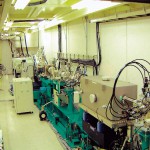
Fig.3 The beamline construction of BL12B2 was completed in September 2000. After radiation test in the early October, the beamline is now in its commissioning phase.
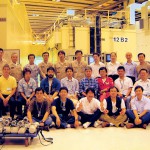
Fig.4 People from APCST, SPring-8 and hutch maker joined the action of radiation test on October 4, 2000.
The first major milestone of BL12B2 took place on October 4 when the synchrotron light passed through the beamline. This also marked the beginning of the beamline commissioning. The first EXAFS spectrum was obtained on Pd K-edge as shown in Fig. 5.
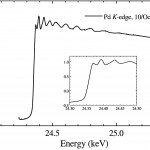
Fig.5 Pd K-edge EXAFS spectrum using Si(311) for DCM taken on October 10, 2000. Efforts have been taking to improve the electronic noise level.
Conclusion Remarks
With the help of SPring-8, we were able to complete the beamline construction of BL12B2 in time and within budget. Beamline BL12B2 is officially in the commissioning phase now. Now we are doing detail studies of the beamline performance, including photon energy calibration, flux measurement, high harmonic contamination study, spot size, etc. The Q-resolution in scattering will then be studied using the 6-circle diffractometer. Meanwhile, a series of absorption and diffraction experiments by Taiwan users are being prepared.
The Taiwan APCST Beamline Office at SPring-8 is in place to take charge of the beamline administration and operation. We have currently four technical staff members stationed at our SPring-8 office, and three more will join soon.
Acknowledgment
We are grateful to many staff members at SPring-8 and at APCST. Without their skillful helps, the work reported here would not be possible. Special thanks are due to Dr. Tetsuya Ishikawa, Dr. Hideo Kitamura and Mr. Wataru Matsumoto for their continuous support of this project and to the SPring-8 Director Dr. Hiromichi Kamitzubo for his commitment in the promotion of international collaboration. We also give special thanks to Prof. Y. C. Liu, Prof. P. K. Tseng and Dr. C. C. Kao for their valuable advices. This project is being under the directorship of Prof. C. T. Chen and Prof. K. S. Liang.
Mau-Tsu Tang
Asia and Pacific Council for Science and Technology
TEL : +886-3-578-0281 Ext 7222
e-mail : mautsu@srrc.gov.tw
Tang-Eh Dann
Asia and Pacific Council for Science and Technology
TEL : +886-3-578-0281 Ext 7224
e-mail : dann@srrc.gov.tw
Cheng-Chi Chen
Asia and Pacific Council for Science and Technology
Taiwan Beamline Office
TEL : 0791-58-1867 FAX : 0791-58-1868
e-mail : ccchen@spring8.or.jp
Gao-Yu Hsiung
Asia and Pacific Council for Science and Technology
TEL : +886-3-578-0281 Ext 6303
e-mail : hsiung@srrc.gov.tw
Yong Cai
Asia and Pacific Council for Science and Technology
Taiwan Beamline Office
TEL : 0791-58-1867 FAX : 0791-58-1868
e-mail : cai@spring8.or.jp
Chao-Hung Du
Asia and Pacific Council for Science and Technology
Taiwan Beamline Office
TEL : 0791-58-1867 FAX : 0791-58-1868
e-mail : chd@spring8.or.jp
Masatada Yuri
Asia and Pacific Council for Science and Technology
Taiwan Beamline Office
TEL : 0791-58-1867 FAX : 0791-58-1868
e-mail : yuri@spring8.or.jp
King-Long Tsang
Asia and Pacific Council for Science and Technology
TEL : +886-3-578-0281 Ext 7233
e-mail : tsang@srrc.gov.tw;








